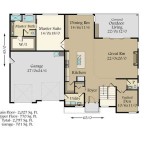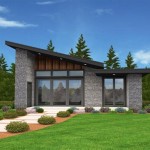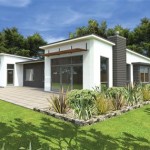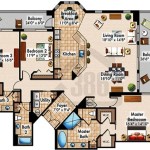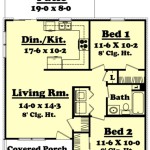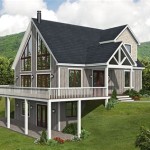Eco-Friendly House Floor Plans: Designing for a Sustainable Future
In an era marked by growing environmental concerns, homeowners are increasingly recognizing the importance of sustainability in their living spaces. Eco-friendly house floor plans offer a solution by incorporating design principles that minimize environmental impact and promote a healthy indoor environment.
Benefits of Eco-Friendly Floor Plans
- Reduced Energy Consumption: Energy-efficient design elements, such as increased insulation, passive solar heating, and natural ventilation, can significantly reduce energy costs and greenhouse gas emissions.
- Improved Indoor Air Quality: Eco-friendly floor plans prioritize the use of non-toxic building materials and adequate ventilation to create a healthier living environment.
- Water Conservation: Water-saving fixtures, rainwater collection systems, and drought-tolerant landscaping help conserve this precious resource.
- Reduced Waste: Sustainable floor plans encourage efficient use of space and encourage recycling and composting to minimize waste generation.
Key Features of Eco-Friendly Floor Plans
- Passive Solar Design: Orienting windows and doors to maximize natural light and warmth reduces reliance on artificial heating and lighting.
- Natural Ventilation: Cross-ventilation and strategic placement of windows promote airflow and minimize the need for air conditioning.
- Green Roofs and Walls: Living roofs and walls provide insulation, reduce stormwater runoff, and improve air quality.
- Sustainable Building Materials: Recycled and renewable materials, such as bamboo flooring and recycled countertops, help reduce environmental impact.
- Energy-Efficient Appliances: ENERGY STAR-rated appliances consume less energy and contribute to overall energy savings.
Considerations for Eco-Friendly Floor Plans
- Climate and Site Conditions: The design should be tailored to the local climate and site orientation to optimize passive solar gain and natural ventilation.
- Building Orientation: Placing the house to face south maximizes solar energy while minimizing heat gain from the west.
- Window Placement: Large windows should be placed in south-facing areas to capture natural light and warmth, while smaller windows on the north side minimize heat loss.
- Energy Zoning: Separating energy-intensive areas, such as the kitchen and laundry room, from living areas reduces energy consumption.
- Smart Home Technology: Integrating smart home features, such as automated lighting and thermostat controls, can further enhance energy efficiency.
Professional Expertise
Designing eco-friendly house floor plans requires specialized knowledge and expertise. Hiring a professional architect or designer who specializes in sustainable design can ensure that the floor plan meets environmental and energy-efficiency standards while creating a comfortable and functional living space.
By embracing eco-friendly floor plans, homeowners can create sustainable homes that reduce their environmental footprint, improve indoor air quality, and contribute to a healthier future for generations to come.

Eco Friendly Home Plans House Design

Eco Sustainable House Djuric Tardio Architectes Archdaily
Ecogeneration Luxury Sustainable Modular Homes Ecoliv

Eco Friendly Single Floor Kerala Villa House Design Courtyard Plans
Ecogeneration Luxury Sustainable Modular Homes Ecoliv

House Plan 1 Bedrooms Bathrooms Garage 90101 V1 Drummond Plans

Smart Eco Sustainable Prefab House Charms With Versatile Green Goodness Decoist

Pin On Architectural Presentations Drawings Models Concepts
Floor Plan Arviat Northern Sustainable House Cmhc 2007 P 22 Scientific Diagram

Seco Homes Your Eco Friendly Home Builder For Energy Efficient

